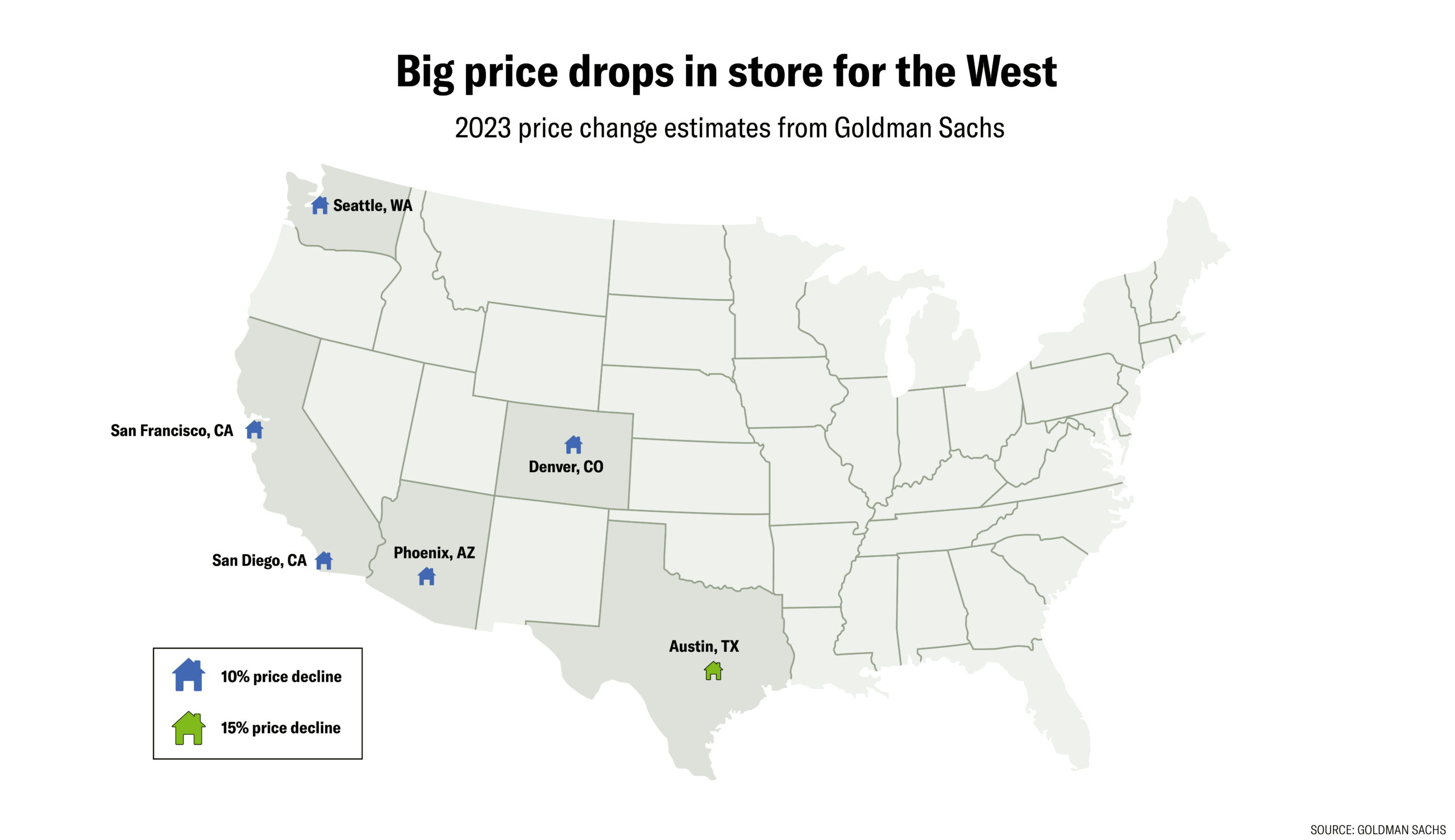Houses in several overheated cities in the western United States will see massive price declines in 2023, researchers at Goldman Sachs predict.
In a report released this week, the bank’s economists noted a stark regional divide in expectations for home prices, with cities west of the Mississippi facing steep price corrections in the face of elevated mortgage interest rates.
MORTGAGE DEMAND RISES 7% AS RATES FALL IN SIGN OF LIFE FOR HOUSING
“On one hand, the model suggests that expensive [metropolitan areas] in the Pacific Coast and Southwest regions could see cumulative incremental home price declines of 15-20%, given how dramatically affordability has declined over the past couple of years. On the other hand, the model suggests that the Mid-Atlantic and Midwest regions will likely face limited price declines,” the economists wrote.
For instance, Austin, Texas was a popular destination for people during the pandemic who took advantage of remote-work opportunities and moved across the country. As a result, Austin became a “coronavirus boomtown” and as people bid for real estate, prices surged. Now that momentum has reversed, and will only get worse in the coming years, according to Goldman Sachs.
The researchers predict that housing prices in Austin will fall by more than 15% this year alone and will continue far more modest declines in 2024. Likewise, Phoenix, Denver, and Seattle will see home prices dropping more than 10% this year and falling in 2024 as will the California cities of San Diego and San Francisco, the report details.

Meanwhile, Miami and Baltimore are the two urban areas Goldman Sachs identified that are expected to see housing price increases both this year and next. Philadelphia, New York, and St. Louis are forecast to see a slight decline in housing prices this year, but then see prices go back up in 2024.
The researchers said that price trends at the metro level will be dictated by a “tug-of-war between housing demand and supply” over the next two years.
“[Metropolitan statistical areas] with stronger affordability like Chicago and Philadelphia — for which payments on new mortgages only cost roughly a quarter of monthly income — should see smaller home price declines than metros with poor affordability like many cities in the West — some of which are seeing mortgage payments claim three-quarters of monthly income,” the report reads.
This week’s housing report comes after Goldman Sachs released a note to clients this month warning of housing market crashes in several U.S. cities. During the Great Recession, home prices declined by 27%, and several parts of the country appear likely to approach that level of decline from their most recent peak to their forecast troughs.
Goldman Sachs predicts that places like Austin, San Jose, Phoenix, and San Diego will grapple with declines of more than 25% from their most recent high over the next year or so, owing in part to the Federal Reserve’s now nearly yearlong quest to tighten its monetary policies.
While fears of a broad-based recession are percolating for 2023, most economists already recognize the housing market as being recessed. That is because when the Fed raises interest rates, mortgages are one of the first things affected.
CLICK HERE TO READ MORE FROM THE WASHINGTON EXAMINER
As of Wednesday, the average rate on a 30-year fixed-rate mortgage was 6.15%, down from its peak of over 7% in October and into November, according to Freddie Mac. The rate on an average 15-year fixed-rate mortgage was 5.28%. The current level of mortgage rates is still much higher than the ultra-low levels that were recorded during the housing boom in the pandemic’s wake.
While the Fed aggressively hiked rates through much of last year to drive down inflation, as price growth has begun to cool, it appears likely that the central bank will keep easing its foot off the gas this year, although it is unclear when rates might actually start to fall again.

